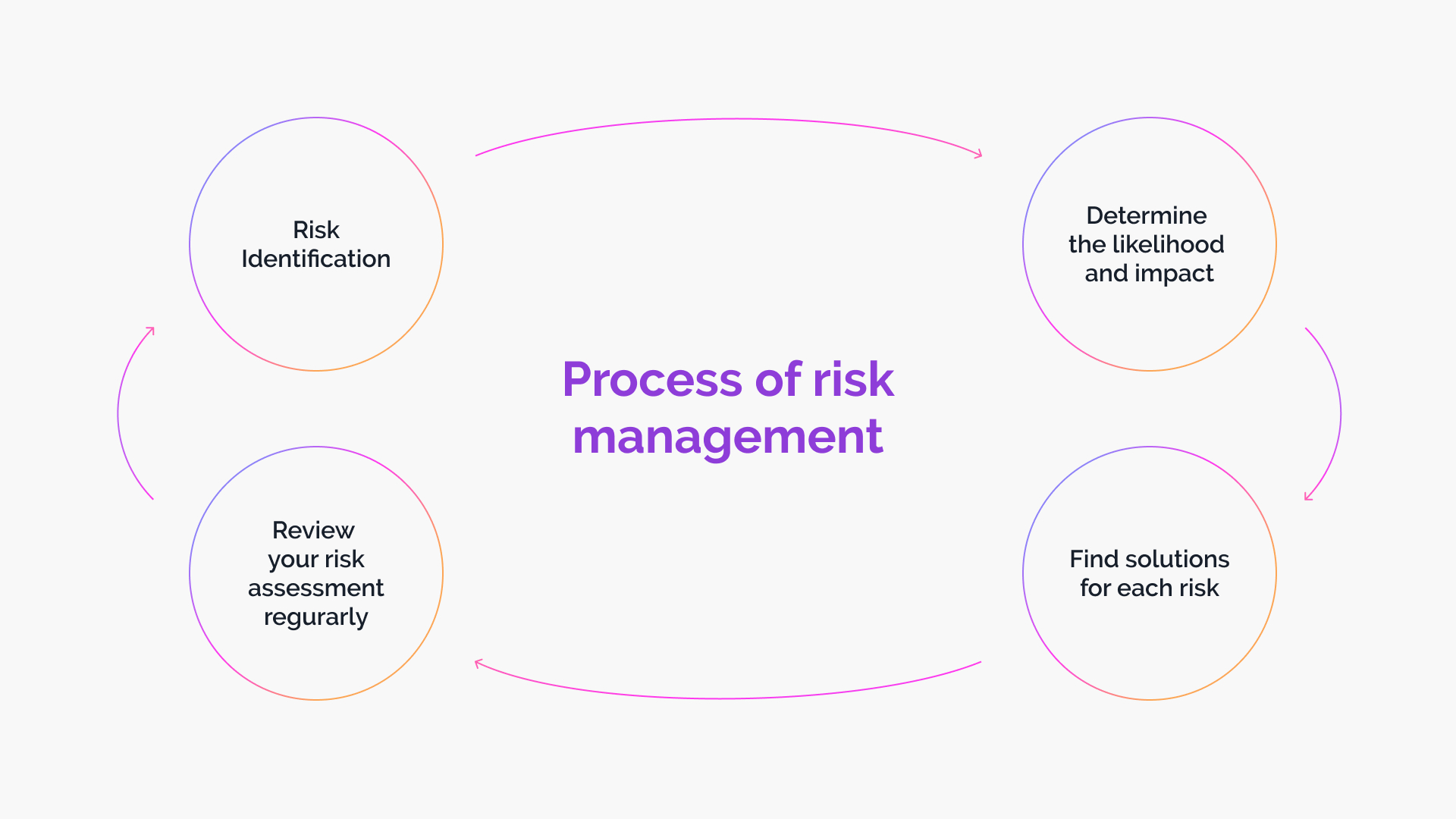
What is Project Risk?

Every project involves risk. Imagining the risks that may arise during its implementation is the best way to prepare appropriate solutions. Their implementation in advance can facilitate the comprehensive execution of the project and avoid delays. What exactly is project risk? What are the most common project risks?
What is project risk?
Project risk is the occurrence of various situations that may harm the implementation of the project and affect its success. They may violate the agreed budget, cause delays or prevent the achievement of the assumed goals in full.
Project Risk may be caused by external factors, such as changes in policy, law, social and environmental issues, and internal factors, such as changes in the project team, restructuring, and other random events.
The flowchart is an example of what to do in the case of Project Risk Management:
Scope creep risk
It is extremely important to define the project roadmap and goals accordingly. A ready plan should be presented to stakeholders so that they do not introduce risky and costly changes due to the lack of appropriate communication.
The risk of not having an established vision and its details is high. Any change can lead to missed deadlines and additional costs that are not included in the budget and even decide whether the project will be successful. Regular project progress checks should also be considered to reduce the risk of non-compliance and unknowingly moving away from set goals.

Types of project risks: Communication risk
Part of the work ethic is maintaining an appropriate flow of information between individual project team members, subcontractors, and stakeholders. Without proper communication, developing a good action plan, assigning tasks, and maintaining a coherent position and project goal is close to impossible. Misinformation can lead to disruptions in project implementation, unnecessary conflicts, and lack of support in the implementation of tasks in accordance with the goal.[1]
Read also: The 10 most useful lessons from more than a 10 years of experience in building digital banking platforms
The risk of an ill-matched project team
A properly structured project team is of great importance for the success of the project. People without experience and knowledge of project methodology may not know the basic organizational principles and act against generally accepted regulations. Lack of experience can also affect the success of the project. We are talking here about the lack of proper skills and knowledge in carrying out a specific task.
The problem is also individuals who are resistant to change, which can cause quarrels and delays in the project.
IT project risk: Technology risk
Accelerating and streamlining project implementation is often associated with the use of innovative technology. Typically, the risk is related to the lack of hardware compatibility with the necessary software or simply the lack of ability to use technological solutions. To avoid technological risk, it is also worth considering backing up data and considering the need to use alternative tools if necessary.
Common project risks: Financial risks
Budget overruns can often be related to market conditions, such as salary increases for specific positions. If you don’t offer a proportionately higher wage for some work, you can lose the opportunity to hire the best people and face staff shortages. Therefore, the lack of an established financial reserve may be associated with a high risk in the implementation of project tasks.
The second financial risk is the lack of timely payments for completed tasks. For this reason, part of the budget is invested, and the lack of payments received makes it impossible to cover further expenses. Relying on funds that result from late payments can have a negative impact on the project.
Potential project risks: Performance risk
Performance risk is a type of risk that is beyond the control of the parties involved in project implementation. Even if every element of the project has been implemented, its efficiency may not be sufficient to say that the main goal has been achieved. Unfortunately, this is a significant risk because it has a large impact on the functioning of the company. However, low performance is difficult to predict, and it is only possible to mitigate the impact of performance risk on the company’s future by applying appropriate strategies.
Read also: Migrating existing web applications to the public cloud
Governance risk
The implementation of the project, which must be carried out in accordance with the regulations and legal requirements applicable in a given industry, is very risky. If new regulations are introduced, it will be necessary to adapt to them in the project.
The bottom line for managing project risk
These are just a few of the most common examples of project risk faced by project managers and project teams. Their frequency and type are often related to the specificity of the project and the industry in which they are implemented. Preparing for risk management in each project is a never-ending job, but a conscious approach to the project can increase the chance of its success.
